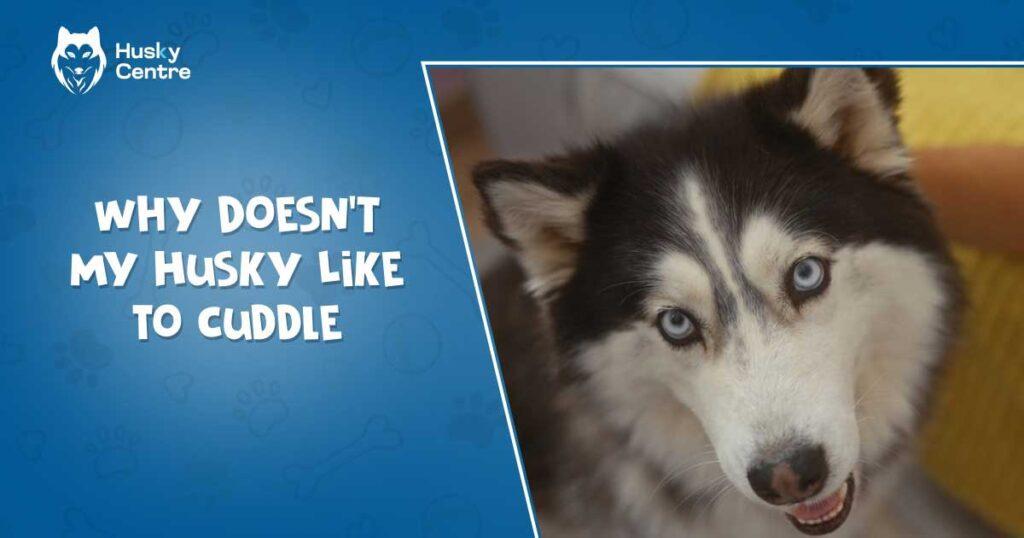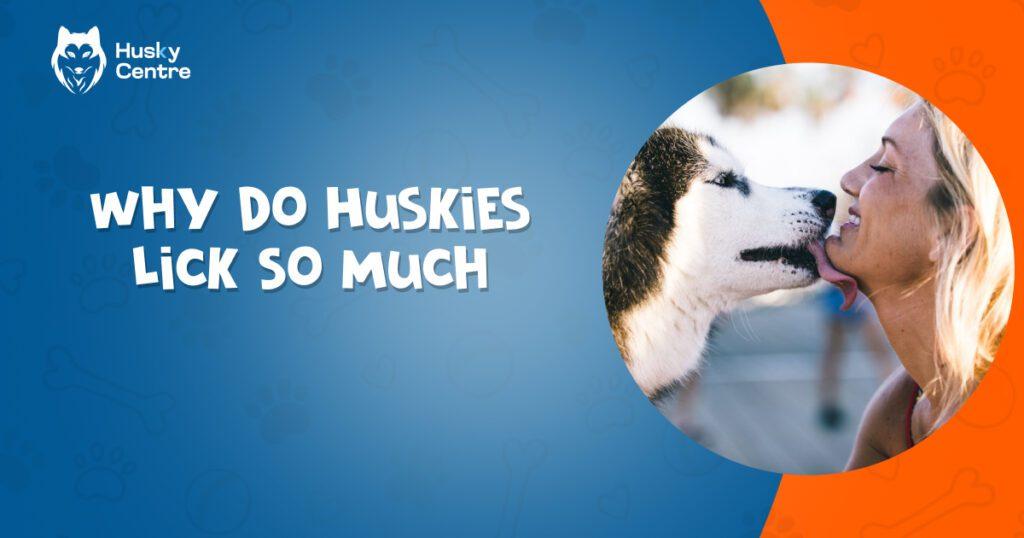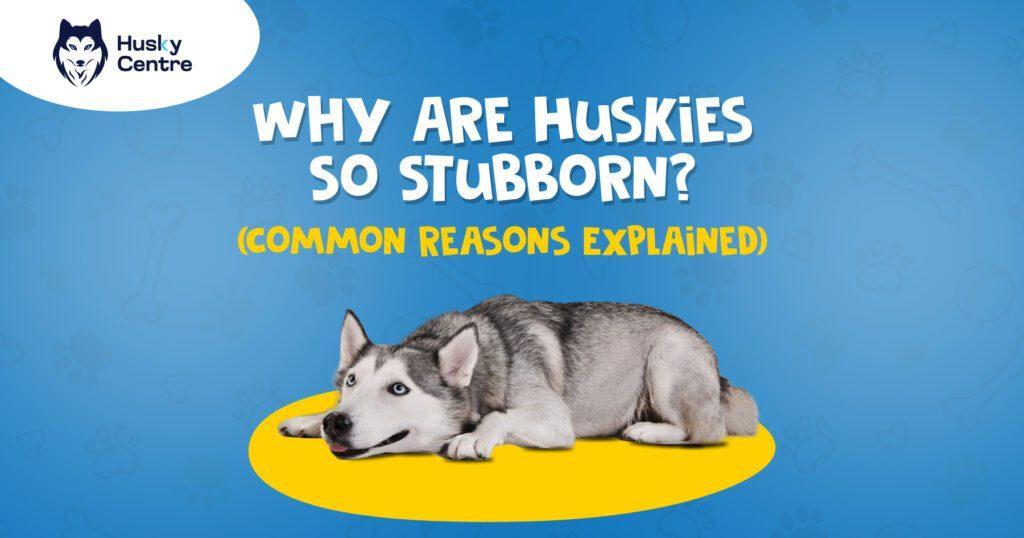Huskies are independent and energetic, often preferring activity over cuddling. Their breed traits emphasize endurance and resilience.
Huskies are known for their spirited and independent nature. Unlike some other dog breeds, huskies were bred to work in harsh conditions, pulling sleds across long distances. This inherent resilience and independence often translate into less need for physical closeness.
Huskies enjoy their space and may show affection in different ways, such as playing or simply being near you without physical contact. Understanding these breed-specific traits can help you better appreciate your husky’s unique personality and adjust your expectations accordingly. Always remember, every dog is an individual, and some huskies might enjoy cuddling more than others.
Understanding Husky Temperament
Are you wondering why your husky doesn’t like to cuddle? Understanding husky temperament can provide some insights. Huskies have unique personality traits that set them apart from other dog breeds. Their independent nature, history as working dogs, and tendencies to be less physically affectionate all play a role in their behavior.
Independent Nature Of Huskies
Huskies are known for their independent nature. They are not like other dog breeds that crave constant attention. Here are some key points about their independent behavior:
- Self-sufficient: Huskies can entertain themselves and do not need their owners to keep them occupied all the time.
- Explorative: They love to explore their surroundings and are often curious about new things.
- Strong-willed: This breed has a strong-willed personality, which means they like to do things their way.
These traits can make huskies seem less affectionate. They enjoy their own space and may not seek out cuddling as much as other dogs. Their independent behavior is a part of their charm and contributes to their unique personality.
History As Working Dogs
The history of huskies as working dogs also explains their behavior. Huskies were bred to pull sleds across long distances in harsh conditions. This history has shaped their temperament:
| Working Dog Traits | Impact on Behavior |
|---|---|
| High Energy Levels | Huskies need a lot of exercise and may be too restless to cuddle. |
| Endurance | They are built for long-distance travel, requiring them to be tough and resilient. |
| Team-Oriented | Huskies work well in packs but may not show affection in the same way domesticated dogs do. |
Their history as working dogs has made huskies more focused on tasks and less inclined to be lap dogs. They are always ready for action and adventure, which can make them less interested in cuddling.
Tendencies To Be Less Physically Affectionate
Huskies tend to be less physically affectionate compared to other dog breeds. Here are some reasons why:
- Natural Instincts: Huskies have instincts that prioritize survival and independence over physical affection.
- Social Behavior: In a pack, physical affection is not always shown through cuddling but through other social behaviors.
- Personal Space: They value their personal space and may not enjoy being held or hugged tightly.
These tendencies do not mean that huskies do not love their owners. They simply express their affection in different ways. Understanding husky personality traits can help you appreciate their unique forms of affection.
In conclusion, the independent husky behavior, their history as working dogs, and their natural tendencies all contribute to their lower levels of physical affection. Embrace their unique qualities and find other ways to bond with your husky that respects their nature.
Possible Reasons For Non-cuddling Behavior
Is your husky not as cuddly as you’d like? You’re not alone! Many husky owners notice their pets aren’t always fans of snuggling. Let’s explore some possible reasons for non-cuddling behavior in huskies.
Temperature Sensitivity
Huskies are bred for cold climates. They have thick fur coats that keep them warm in freezing temperatures. This means they can get hot quickly in warmer environments. Here are some reasons your husky avoids cuddling due to temperature sensitivity:
- Thick Fur Coat: Their double-layered fur provides insulation, making them feel hot even in mild temperatures.
- Natural Cooling: Huskies prefer to stay cool. Cuddling generates body heat, which can be uncomfortable for them.
- Resting Spots: They often choose cool floors or shaded areas over warm laps or beds.
To help your husky feel more comfortable, ensure they have access to cool places. Avoid forcing them to cuddle if they seem uncomfortable. A cool environment can make a big difference in their cuddle preference.
Preference For Personal Space
Huskies are known for their independent nature. They often value their personal space and may not enjoy being held or cuddled. Here are some key points about their space needs:
| Reasons | Description |
|---|---|
| Independent Breed | Huskies have a strong sense of independence, making them less likely to seek constant physical affection. |
| Natural Instincts | They have a strong pack mentality but also need their own space within the pack. |
| Explorative Nature | Huskies love to explore and may not want to stay still for long periods. |
Respect your husky’s personal space. Give them time to come to you for affection. Forcing cuddles can lead to stress and anxiety. Understanding their need for space enhances your bond and ensures their happiness.
Unfamiliarity With Physical Closeness
Some huskies might not be used to physical closeness, especially if they weren’t socialized much as puppies. Here are some factors to consider:
- Early Socialization: Puppies that weren’t handled often may grow up to be less comfortable with touch.
- Past Experiences: Negative experiences with physical contact can make a husky wary of cuddling.
- Gradual Introduction: Introducing your husky to physical closeness gradually can help them get used to it.
To help a husky unfamiliar with cuddling, start with gentle, short sessions of physical contact. Use treats and positive reinforcement to create a positive association with touch. Patience and consistency are key to helping your husky become more comfortable with cuddling.
Encouraging Affection Safely
Huskies are known for their independence and playful nature. If your Husky doesn’t enjoy cuddling, it can be puzzling. Encouraging affection safely ensures you build a strong bond without making your furry friend uncomfortable. Understanding and respecting your Husky’s boundaries is the first step towards creating positive cuddle experiences and learning alternative ways to bond.
Respect Their Boundaries
Respecting your Husky’s boundaries is crucial for a healthy relationship. Some Huskies may not like cuddling because they have a strong sense of independence. Here’s how to respect their space:
- Observe their behavior: Pay attention to your Husky’s body language. If they seem uneasy, give them space.
- Avoid forced cuddles: Forcing your Husky to cuddle can create negative associations with affection.
- Offer them choices: Let your Husky come to you when they’re ready for attention.
Creating a comfortable environment where your Husky feels safe is essential. Consider their personal preferences and provide them with areas where they can relax undisturbed.
| Signs of discomfort | Signs of comfort |
|---|---|
| Growling or snapping | Relaxed posture |
| Stiff body language | Wagging tail |
| Backing away | Approaching you |
Create Positive Cuddle Experiences
To help your Husky enjoy cuddling, create positive experiences associated with close contact. Here are some ways to do that:
- Start slowly: Begin with short, gentle petting sessions.
- Use treats: Reward your Husky with treats during and after cuddling.
- Pet in their favorite spots: Find areas they enjoy being touched, like behind the ears or under the chin.
Positive dog affection can be nurtured by associating cuddles with enjoyable activities. For instance, cuddle time can follow playtime or a walk, making it a part of a routine they love.
Consistency is key. Regular, gentle interactions can help your Husky feel more comfortable with closeness over time. Remember to always watch for signs of discomfort and adjust accordingly.
Learn Alternative Ways To Bond
If your Husky doesn’t enjoy cuddling, there are other ways to strengthen your bond. Here are some alternatives:
- Playtime: Engage in interactive games like fetch or tug-of-war.
- Training sessions: Teach new tricks and commands to build trust and communication.
- Outdoor adventures: Go on hikes or long walks to explore new environments together.
Respectful bonding with your Husky can be achieved through activities they enjoy. This not only strengthens your relationship but also provides physical and mental stimulation for your pet.
Creating dog closeness doesn’t always mean physical contact. Verbal praise, treats, and spending quality time can also foster a strong bond. By understanding and respecting their preferences, you’ll find many ways to connect with your Husky.
Frequently Asked Questions
Why Doesn’t My Husky Like To Cuddle?
Huskies are independent by nature. They may show affection in different ways, like being playful or staying close by.
Are Huskies Naturally Affectionate Dogs?
Huskies are affectionate but often show it differently. They might not enjoy cuddling but love to play and interact.
How Do I Make My Husky More Cuddly?
Respect your husky’s boundaries. Gradually introduce more physical affection and reward them with treats and praise.
Is It Normal For Huskies To Be Aloof?
Yes, huskies can be aloof. They are independent and often prefer their own space, which is completely normal.
Conclusion
Understanding your husky’s behavior helps strengthen your bond. Respect their space and learn their comfort zones. Each husky is unique, with different needs for affection. Patience and observation are key. Embrace their individuality and enjoy the moments they do seek cuddles.
This builds a healthier and happier relationship.


Meet Jarred, the heart and soul behind HukyCentre. With a deep affection for furry friends, he pours his passion into every word he writes. His genuine love for dogs shines through in his engaging and informative content. As a dedicated dog enthusiast, Jarred’s goal is to share valuable insights and tips that resonate with fellow dog lovers. Join Jarred on the journey as he celebrates the joy and companionship that dogs bring into our lives.



